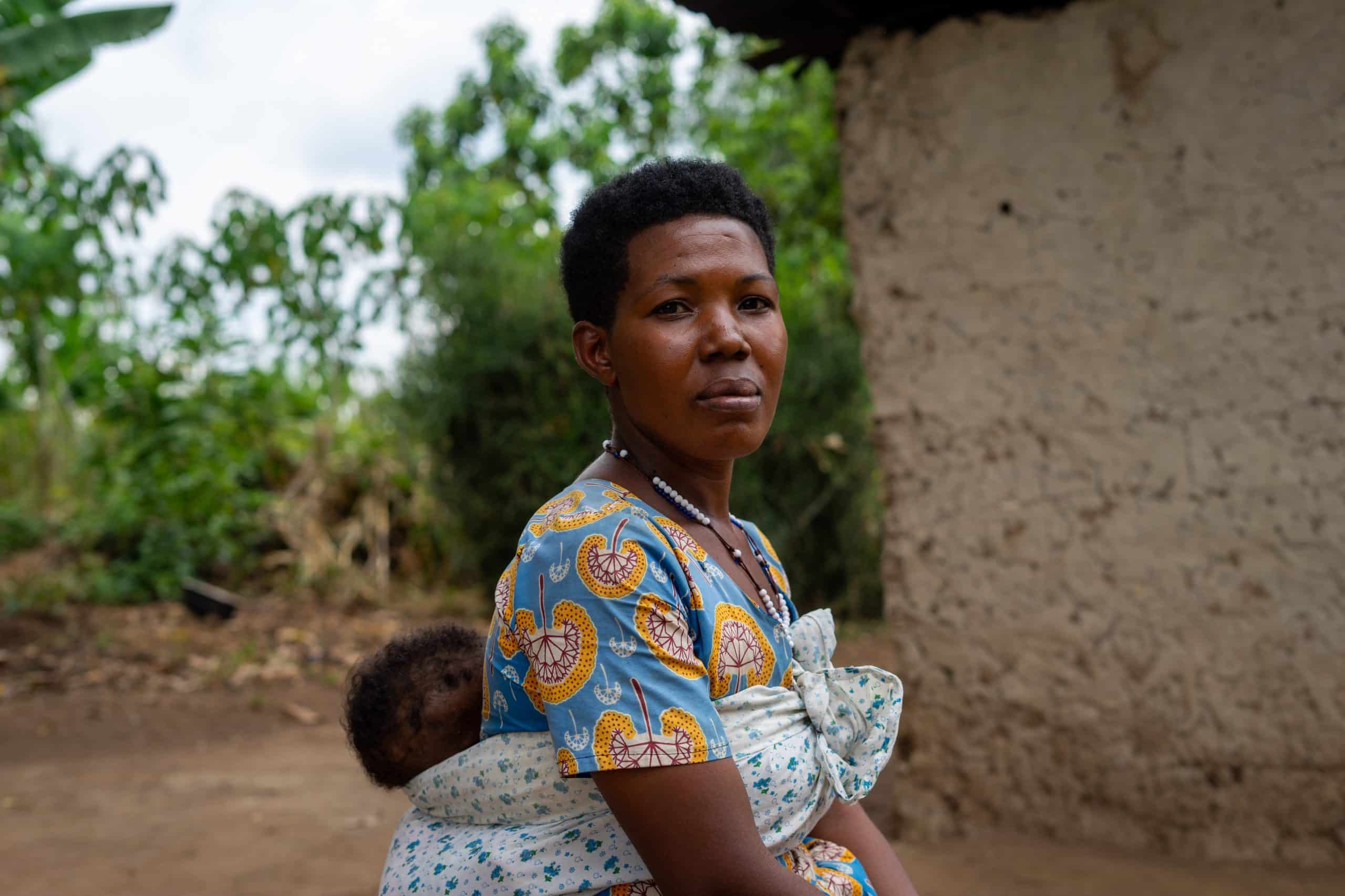5 Things We Are Doing to Advance Gender Equity

While ultra-poverty is one of the most challenging and complex issues we face today, a key aspect that holds answers to addressing it sustainably, is that poverty does not affect everyone equally. Gender is often both a cause and an element that perpetuates poverty. Inequitable distribution of resources, traditional family and community level decision-making structures, lack of equitable access to finance, and unequal distribution of unpaid care work results in women and girls often having fewer economic opportunities and earning less.
The initial baseline numbers from our partner communities point clearly to a gender-based gap in household incomes. The baseline income and earnings of men-headed households in our partner communities stood at $1.20/day USD. In contrast, women-headed households – primarily consisting of households in which a woman is the sole earner as a result of divorce, abandonment or widowhood– earned $0.79/day USD, indicating a 34% disparity in household incomes at baseline. The Grameen’s Progress Out of Poverty Index (PPI), a measure of multidimensional poverty, also indicates that women-headed households have a higher PPI (39.4%) compared to men-headed households (36.4%).
A sustainable poverty alleviation framework, therefore, needs to address gender-based barriers, provide equitable access to income-generating technical knowledge and resources, promote gender-inclusive decision-making structures and result in inclusive community-level representation in leadership and governance.
As a framework, our programs are built to include the most vulnerable groups, provide support and mentorship, create structures that promote and reflect gender inclusivity, and measure change at the family and community levels. Here’s how we do it.
1. Integrating equity in program design
Our programs begin by identifying and incorporating local community needs, including those of adult and young women. Focus groups involving adult and young women help facilitate open conversations and understanding of specific barriers to participating in income-generating activities. This foundation is further built upon by setting inclusive guidelines for technical committees and cooperatives and orienting community engagement toward long-term behaviour change.
This approach paves the way for improving gender equity through a cascading effect that addresses gender-specific barriers, provides technical knowledge and support to adult and young women, sensitizes the community to gender bias and practising inclusion, and ultimately results in the representation of adult and young women at community leadership and governance levels.
2. Addressing gender-specific barriers
We work with last-mile communities to address social, cultural, knowledge and access-specific barriers that may prevent women and girls from having the same income-generating opportunities as men and boys. For instance, the burden of fetching water has been traditionally associated with women and girls. Additionally, some cultures prioritize the calorie needs of men (traditional income earners), especially during food insecurity and inflation.
By providing last-mile and water-stressed communities with access to clean water and improved food security through home gardens, we ensure that women and girls have the time and space to participate in income-generating initiatives and are not disproportionately affected by scarcities. This is further supplemented by training sessions that focus on attitude and mindset change at the family and community level to break traditional gender roles in the family and promote equal distribution of responsibilities. At 24 Months, the distance to clean water sources for our partner households reduced by 40% over baseline, with an average household distance of 700 m, below the recommended 1 km, while 92% of partner households consumed vegetables from their gardens compared to only 21% at baseline, thus improving food security.
3. Inclusive cooperatives
To pool agricultural and supplementary income and access affordable credit, we work with partner communities to form Village Savings and Loan Associations (VSLAs). Through these cooperatives, adult and young women can access affordable credit to invest in agriculture, business or necessities, technical know-how and support for improving farm yields. Moreover, as committee members and leaders, they can influence cooperatives to better support the needs of vulnerable groups. Additionally, our partner communities also form women-led and women-only Village Savings and Loan Associations (VSLA) to better address the specific financial needs of adult and young women. A study funded by USAID on the impact of women’s involvement in agricultural VSLAs found the following: “(1) Women’s plots are ploughed in a timely manner; (2) Women have access to high-quality inputs and other services, (3) women are farming larger plots of land, and (4) Women are producing diversified crops.”
4. Community and family-level sensitization
To create a community-level buy-in and address social barriers, our teams work on sensitizing adult and young men to understand and address gender bias, provide space for adult and young women to participate in income-generating activities and view them as equal stakeholders. To mitigate the risks in challenging traditional power dynamics and achieve proactive adoption of inclusive practices, we ensure strong community entry in partnership with local government authorities. We work with all community members, especially influencers and leaders, to build trust and ensure buy-in and ownership of our inclusive projects. Additionally, aligning with and using community-based structures encourages open dialogue and community-driven responses to address gender inequality issues. Raising The Village also implements a robust safeguarding framework to ensure safeguarding and child protection risks are monitored and mitigated. As a result, our partner households report an increase in joint decision-making and engagement between men and women, with a 15% increase in collective decision-making on family planning, 14% on education, 9% on saving, and 8% on household spending.
5. Promoting women leadership
An approach that addresses gender barriers promotes open dialogue and establishes inclusive structures, allowing us to create transformative change that provides adult and young women representation and further influence community attitude. Participants from various cooperatives are elected to leadership positions and trained to create a cyclic pattern where they can further support and enable vulnerable groups to attain economic freedom. We ensure that leadership positions have at least 40% representation of women and 20% of youth across all cooperatives and groups. Our graduating partner communities reported a 256% increase in community leadership positions, with 70% of leadership positions held by adult and youth women.
Be part of our journey. Support last-mile communities by supporting Raising The Village.
Let’s Stay Connected

